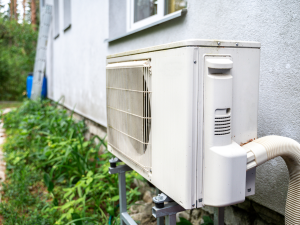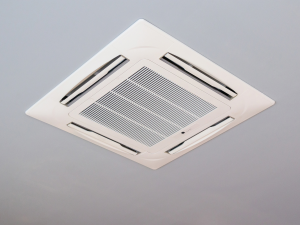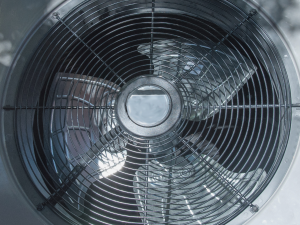You just noticed a moldy smell in your home or car. But your air conditioner is working perfectly. On a closer look, you can spot a significant amount of mold. Horrific! Not only is the presence of mold in your air conditioner an ugly sight, but it also exposes you to harmful and unhealthy conditions. If not removed, you could soon start experiencing health issues such as allergies, asthma, and other breathing problems. And since your home cannot function without the air conditioner, not removing the mold is not an option. But how do you remove the mold without ruining your air conditioner?
But first, how did the mold get to the air conditioner?
Do not beat yourself over the presence of mold in your air conditioner. Since mold is a type of fungus, it only requires water, oxygen, and organic matter to grow. These three things are abundant in your air conditioner. The air conditioner also provides the perfect environment for mold to survive and grow, not forgetting dust and debris.
What are the signs of mold in air conditioners?
What are the tell-tale signs of mold in your air conditioner?
- Musty smell– You may not have seen mold in or around your air conditioner. However, if you have a distinct musty feel, especially when the air conditioner is turned on, you need to have it checked. Also, if the room where the AC is placed has a distinctly unpleasant smell that is not in any other part of the house, that is a clear sign of mold growing in your AC.
- Visible signs of mold– If your AC is located nearby, then you may have seen mold growing on the AC upon a visual inspection. These can be either black, brown, or green. Also, if you notice white or gray stains, you could have mildew, which is a type of mold. However, mold can often go unseen in the early stages since mold scores are microscopic and could be hidden from view. As such, a visible inspection may not always be accurate.
- Health symptoms when the Ac is turned on– Mold can cause various health conditions such as allergies, asthma, and other breathing conditions. If you realize that you start to cough or display allergy symptoms such as watery eyes, hives, and sneezing when the AC is turned on, then you need to have it checked. In more severe reactions to mold, a person can even experience vomiting, confusion, nausea, and diarrhea.
How can you remove mold from your air conditioner?
Start by turning off your AC
If you suspect that you have mold in your AC system, turn it off. This is an essential step as it stops the circulation of mold and further contamination in your home. After switching off the AC, you can then inspect the extent of the mold problem. If you plan on removing the mold yourself, ensure that the area where the clean-up will take place is well aerated. Also, ensure you wear protective clothing such as a face mask, gloves, and goggles.
- Removing mold from a window AC unit– If mold is visible in your window AC unit, then the problem could be more than you can see. While removing mold is successful in most instances, large amounts of mold often grow back. As such, the best thing to do is to replace the AC. However, if that is not an option, disassemble the AC unit and clean the mold from the coils, evaporators, internal ducts, and any other parts of the air conditioner.
- Removing mold from a central AC– Mold in your central AC is a health threat to your family. Given the complexity, it is not advisable to attempt a DIY mold removal from the central AC. Also, using surface treatments and biocides to kill the mold in your central AC is not recommended. If you have mold in your central AC, ensure you get the services of a professional.
- Removing mold in your car AC– Mold in the car AC is not a common occurrence. This is because the AC in the car is designed to drain moisture properly. However, if you leave the windows open in the rain, your car gets wet because of flooding, or if the car does not dry properly after cleaning, you may experience mold issues in the car AC. To remove the mold, you need to disassemble the dashboard to gain access to most of the ductwork. Use a clean cloth and household cleaner. You can also use chemical products to kill mold. However, this is a risk since the chemicals will be blown out once you switch on the AC.
What measures can you take to prevent mold from growing in your air conditioner?
While controlling moisture is the best way to prevent mold from growing in your AC, air conditioners can also be sources of moisture. Here are some methods that you can implement to prevent mold growth in your AC.
- Ensure that AC window units fit the window tightly – This prevents humid air and rain from entering the room.
- Tilt your window AC towards the outside– Tilting your AC towards the outside allows the condensed water vapor in the AC out. If the condensed air does not drain out of the AC, you are likely to experience mold issues.
- Clean filters and grates regularly– Accumulated dust on your AC creates a perfect environment for mold to thrive in or on your AC. Cleaning filters and grates regularly prevent the build-up of dust.
- Ensure you have a functional AC drainage system– A functional AC drainage system ensures that moisture does not collect in the AC unit or the ducts. AC drains should lead to a drain tile through a utility sink. While these drainage systems prevent mold growth by preventing moisture from accumulating in the AC, they can get clogged. As such, ensure that the AC drainage systems are regularly maintained.
- Regular replacement of air filters– Not only do clogged filters impede the flow of air in the AC, but they also provide a source of food for mold to grow.
Removing mold from an AC may seem like the perfect solution. However, if improperly done, you could have the recurrence of mold in your home. Consider getting mold remediation services from a reliable air conditioning contractor. If the mold recurs even after several cleanings, then you might want to replace your AC.




